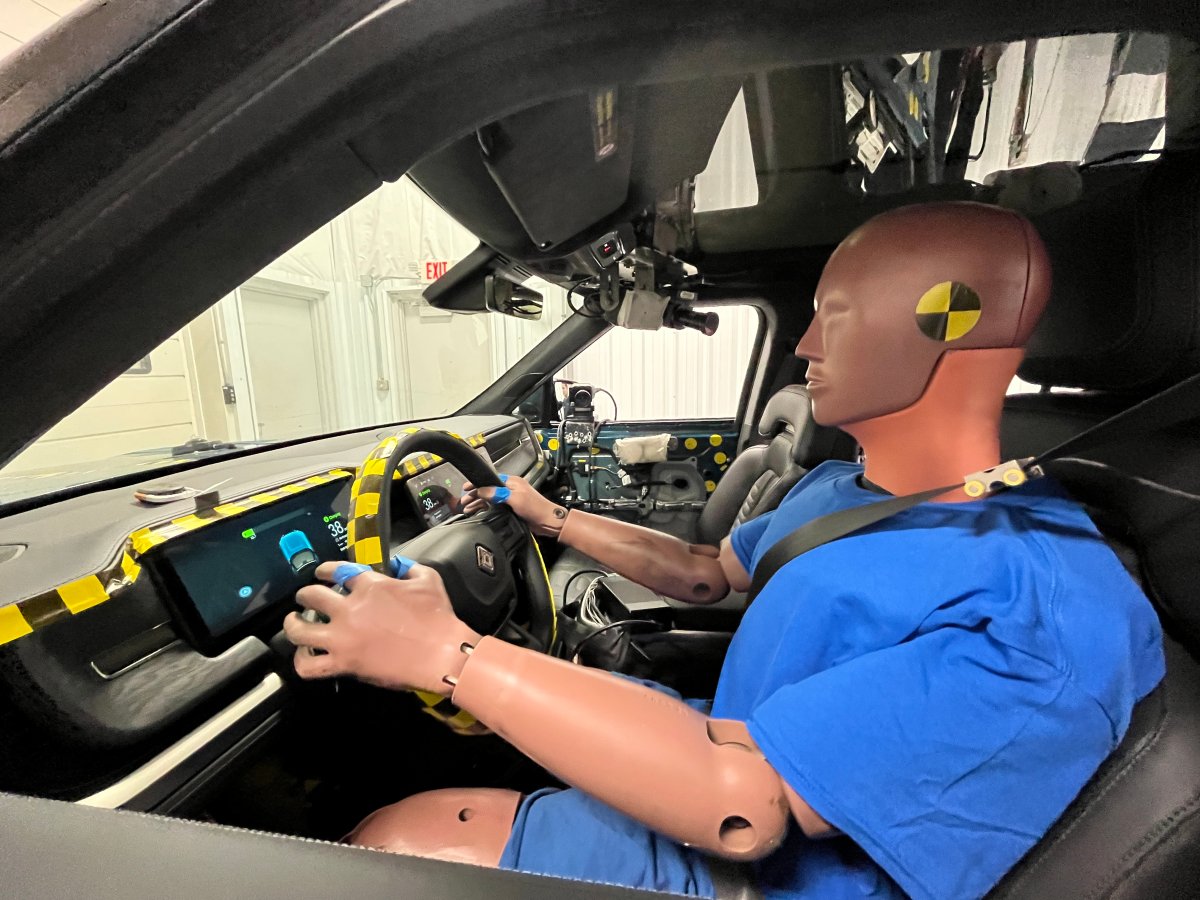Electric vehicles are under increasing scrutiny from safety experts over the risks they pose in a crash, because of their incredible weight and power.

EVs are far heavier than traditional gas-powered cars due to their large battery packs.
“The weight of these vehicles, and the weight of these battery packs in these vehicles, is quite significant,” said Raul Arbelaez of the Insurance Institute for Highway Safety.
Personal vehicles have never been as heavy as the EVs being sold today. The newest models of electric SUVs and pick-up trucks have raised particular concerns.
At a recent conference in Washington, D.C., Jennifer Homendy, the chair of the U.S. National Transportation Safety Board, called attention to G.M.’s 4,000-kilogram electric Hummer.
“The battery pack weighs almost the same as an entire Honda Civic,” Homendy said.
Homendy said electric models from Ford, Volvo and Toyota were all roughly 33 per cent heavier than the gas-powered versions of the same vehicles.
“I am concerned about the increased risk of severe injury and death to all road users from heavier curb weights,” she said.
Global News was invited to witness an EV crash test at the Insurance Institute for Highway Safety in Ruckersville, Va. The test involved a 3,300-kilogram Rivian R1S electric SUV. One-third of the vehicle’s weight was from its battery pack.
During the demonstration, the Rivian, with two test dummies, was catapulted down a 200-metre track at 64 km/hr, before colliding with a wall. The test simulated a head-on collision on the driver’s side.
The I.I.H.S. reports that in over 60 tests it has conducted of EVs, the vehicles have generally performed well at protecting their occupants. It’s the safety of people in other vehicles, along with pedestrians and cyclists, that is increasingly of concern.
“The laws of physics have not changed,” Arbelaez said. “The occupants in the lighter vehicle are always going to come out worse.”
Why is the risk higher?
A 2011 study from the National Bureau of Economic Research estimated that a 1,000-pound (453-kilogram) increase in vehicle weight resulted in a 47 per cent increase in fatality risk.
Weight is not the only issue. Electric vehicles also offer drivers unprecedented engine power and acceleration.
“The acceleration that’s enabled by electric batteries and their motors is a problem,” said Michael Brooks of the non-profit Center for Auto Safety.
The electric Hummer boasts a 1,000 horsepower engine that can take the massive vehicle from 0 to 100 km/hr in three seconds when operating in a special “WTF” or “Watts to Freedom” mode.
“Even though GM warns that you should use the mode on a closed course, it’s not geofenced. Anyone can turn it on anywhere,” Brooks said.
Similarly, the Rivian R1S can accelerate from 0 to 100km/hr in just over three seconds.
“There are so many scenarios in which that speed and that acceleration are just dangerous to others on the road,” Brooks said.
Big powerful batteries are the auto industry’s solution to consumer demands for EVs that can travel hundreds of kilometres on a single charge.
- ‘Shock and disbelief’ after Manitoba school trustee’s Indigenous comments
- Invasive strep: ‘Don’t wait’ to seek care, N.S. woman warns on long road to recovery
- Norad looking to NATO to help detect threats over the Arctic, chief says
- ‘Super lice’ are becoming more resistant to chemical shampoos. What to use instead
Experts have suggested a move toward battery swapping stations, instead of charging stations, could help future EVs run on smaller, lighter batteries.
“You basically pull into the equivalent of a service station to get gas, but instead of getting gas, they’re replacing the battery,” Brooks explained.
Automakers are currently driving in the opposite direction.
Some manufacturers have started to switch their EVs to run on lithium-iron-phosphate batteries, which are even heavier than the lithium-ion batteries currently in use.
At the same time, EVs are rapidly becoming more common on the roads.
Electric Vehicles made up 8.7 per cent of new vehicle sales in Canada in the third quarter of 2022, according to Statistics Canada, accounting for nearly 20 per cent of sales in British Columbia alone. In the U.S., EV sales increased by nearly 65 per cent in 2022, while the Biden administration has proposed new regulations to ensure that that two-thirds of all new vehicles are EVs by 2032. Many manufacturers have set near-term targets to go fully electric, including General Motors, which is aiming to phase out the production of gas vehicles by 2035.
Safety groups say they’re already concerned about an increase in fatalities, worrying that the rush to solve the problem of vehicle emissions, may have unintended consequences on the road.
“What I’m hopeful for is that some of these vehicle masses don’t keep going up and up,” Arbelaez said.
“Vehicles that have higher power and higher power-to-weight ratios have higher crash rates and worse outcomes.”






Comments